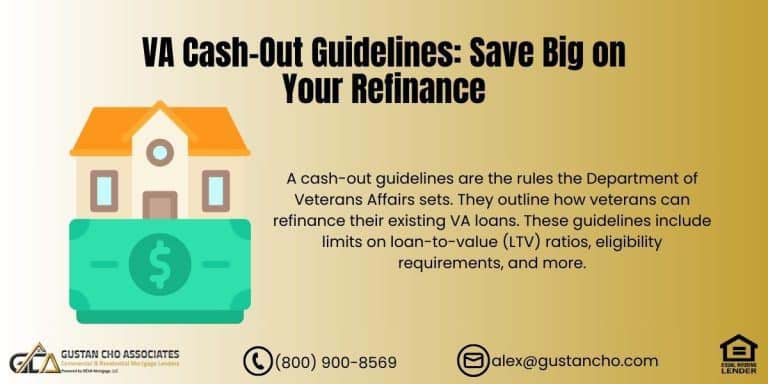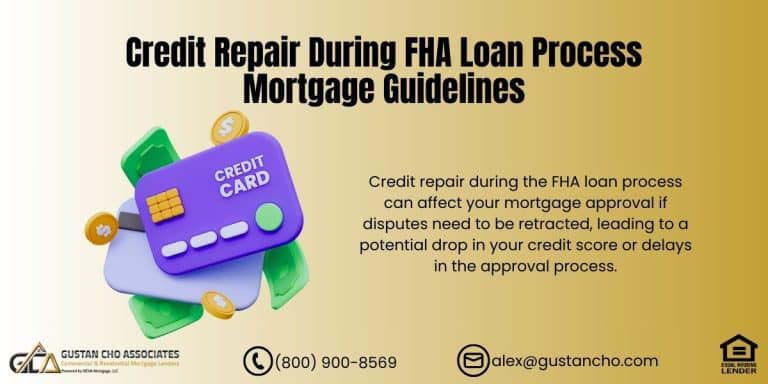In this blog post, we’ll explore how to remove your ex-spouse from your mortgage following a divorce. Despite the overall decline in divorce rates over the past decade—with current rates at 44.2%, slightly below 50% according to the U.S. Census—divorce remains a common reality. For every 6.1 marriages, approximately 2.7 end in divorce. It’s typical for married couples to co-own their home, sharing the responsibilities as mortgage borrowers. Yet, a divorce introduces significant concerns about separating these joint financial ties, particularly how to get your ex-spouse off your mortgage. In many divorce cases, a judge will assign the home ownership to one spouse, who will then solely bear the mortgage responsibilities.
Advice on How To Get Your Ex-Spouse Off Your Mortgage After a Divorce?
In this blog, we’ll explore the steps to get your ex-spouse off your mortgage following a divorce. We will address several scenarios, such as what to do if both names are on the house deed or if you’re not the spouse who retains the home but is still on the mortgage.
What if the ex-spouse awarded the home falls behind on mortgage payments, and you are listed as a co-borrower? In cases where the main borrower defaults making timely payment on their mortgage, the co-borrower will get hurt too.
Understanding how to remove your ex-spouse from the mortgage is crucial after the divorce. Being awarded the home by a judge doesn’t automatically remove your responsibility from the home’s title or the joint mortgage. It is essential to independently manage the separation of the title and the mortgage.
Need to Remove Your Ex-Spouse from Your Mortgage After Divorce? We Can Help!
Contact us today to learn about your options for removing your ex-spouse from the mortgage and securing full ownership.
What Happens To a Mortgage When People Get Divorced?
At Gustan Cho Associates, we often address how to get your ex-spouse off your mortgage when couples divorce. The sole authority to remove an ex-spouse from a joint mortgage rests with the lender. Even if you successfully transfer the deed via a quitclaim, the mortgage remains unchanged under both names unless the lender agrees to modify the mortgage note. Lenders typically do not remove an ex-spouse from the mortgage based on a divorce decree alone. The available strategies include:
- Keeping the ex-spouse on the mortgage.
- Refinancing the mortgage to remove the ex-spouse.
- Selling the property.
Can an Ex-Spouse Remain on the Mortgage After a Divorce?
In some divorces, both spouses maintain a friendly relationship and choose to stay amicable. Questions often arise despite the lack of conflict, such as whether a spouse can remain on the mortgage after the divorce. Even if the spouse relinquishing ownership of the house remains on good terms, they still carry financial liability for the mortgage. This could impact their credit if the spouse retaining the home fails to make timely mortgage payments. To mitigate such risks, it is advisable for the spouse who is giving up the house to remove their name from the mortgage. For the spouse awarded the home in the divorce, ensuring the mortgage is transferred solely into their name is equally important, as well as effectively learning how to get your ex-spouse off your mortgage.
Who Owns The The Home After a Divorce If Both People Are on Title and Mortgage?
Life is full of unexpected twists and turns; one such unpredictable event is divorce. Statistically, nearly half of all marriages end this way. A significant challenge often arises during the separation process: managing shared finances, which can be complex. If you and your spouse have bought a home together, you’ll likely face the dilemma of both your names being tied to the mortgage. Divorce does not automatically dissolve financial obligations. In cases where a married couple bought a home together and have a joint mortgage, both parties have joint liability. Understanding how to get your ex-spouse off your mortgage after a divorce is crucial to prevent future financial complications.
Who Is Responsible For The Debt of a House After a Divorce?
Before proceeding with the mortgage, both parties must agree on who will be responsible for the mortgage debt and who will own the house. This process can be challenging, often involving legal representation and potentially court proceedings. You have already settled this by discussing whether the separation is friendly. After reaching an agreement, verifying who is listed on both the mortgage and the title is crucial. It’s important to note that someone can be named on the house’s title without being included on the mortgage. This information is essential in understanding how to get your ex-spouse off your mortgage after a divorce.
How Is The House Split During a Divorce?
If you and your ex-spouse cannot agree on how to divide your property and debts, the court may decide for you. However, even with a decision, a divorce decree is necessary to finalize property division. Moreover, the responsibility for the mortgage debt rests with the mortgage lender, who determines liability based on the names listed on the loan. This means that regardless of a divorce decree assigning the house to one spouse if both names are on the mortgage, the lender has the final say and may choose not to change the original terms of the mortgage. Understanding these details is important in learning how to get your ex-spouse off your mortgage.
How To Get Ex-Spouse Off Your Mortgage and Title After a Divorce?
To remove an ex-spouse from the property title as part of how to get your ex-spouse off your mortgage, you can employ a quitclaim deed. This document is a legal transfer of property ownership from one individual to another. Although quitclaim deeds are valid legal tools, they offer minimal protection for the buyer, making them most suitable for transactions between family members.
These deeds can be processed quickly and reflect only the interests of the transferring party (the grantor) at the time of the deed’s execution. However, it’s important to note that quitclaim deeds do not verify who legally owns the property afterward.
Looking to Remove Your Ex-Spouse from Your Mortgage? We’ve Got the Solutions!
If you’re divorced and need to update your mortgage, we’re here to guide you through refinancing or other solutions. Contact us now to explore your options.
How Do I Quit Claim My Ex-Spouse Off The House After a Divorce?
A legal professional can draft or complete a quitclaim deed using standard fill-in-the-blank forms. For it to be effective, the grantor must sign it. To ensure its validity, the deed must be delivered to and formally accepted by the grantee. The acceptance by the grantee should be documented in writing and, ideally, notarized.
The quitclaim deed must be recorded at the recorder’s office where the property is situated. It’s important to be aware that a quitclaim deed might impact your title insurance.
Before executing a quitclaim deed, clarifying who will be responsible for the mortgage is crucial. Completing a quitclaim deed could leave an individual accountable for the mortgage without any control over the property, underscoring the importance of resolving these details to effectively learn how to get your ex-spouse off your mortgage.
Which Spouse Is Responsible For The Mortgage After a Divorce?

If the mortgage is in one person’s name only, that individual is solely responsible for the mortgage payments. Both parties hold equal responsibility for the debt if two names are on the mortgage. In cases where both ex-spouses are listed on the mortgage but one no longer owns the house, steps should be taken to remove the non-owner from the mortgage to determine how to get your ex-spouse off your mortgage.
How To Get Ex-Spouse Off Your Mortgage After Divorce With an Assumable Mortgage
A mortgage transfer or assumption involves shifting the mortgage from the original owners to just one party. To effectively remove a spouse from the mortgage, it’s necessary to request a release of liability from your lender. However, obtaining this release can be challenging since the lender has the final say. Often, the most feasible solution is to refinance the mortgage to sever the financial link to an ex-spouse. The individual seeking to refinance must independently meet the necessary credit and income qualifications. Another way to get your ex-spouse off your mortgage after a divorce is by having the spouse who retains the home assume the existing mortgage.
Will An Assumable Mortgage Release My Liability After a Divorce?
Obtaining a release of liability can eliminate the debt from one spouse’s credit report, confirming they are not responsible if payments are delayed. However, lenders may only accept this release if a spouse’s credit rating is subpar or their income is sufficient. It’s important to remember that the mortgage was approved based on the joint application by both spouses. Also, be aware that transfer fees will likely be associated with this process when figuring out how to get your ex-spouse off your mortgage.
What You Need To Know About Refinancing After a Divorce
If the release of liability isn’t granted, your next option for how to get your ex-spouse off your mortgage is to refinance. Keep in mind that refinancing involves costs, and lenders do not typically forgive fees due to a divorce. To qualify for refinancing, you must have equity in the home, and the property’s current market value must exceed the amount owed. Successfully refinancing will result in a new loan solely in the name of one spouse, effectively removing the other from the mortgage obligation.
Ready to Take Full Control of Your Mortgage After Divorce? Let’s Get Your Ex-Spouse Off the Loan!
Contact us today to find out how we can help you navigate this process.
Can I Settle Splitting The House With Cash-Out Refinance With Ex-Spouse During Divorce?
A cash-out refinance offers a method to access your home equity and use it to buy out your ex-spouse’s share of the property during a divorce. This refinancing option involves securing a new mortgage for an amount greater than your current mortgage balance.
The excess amount—the difference between your new and old mortgage—becomes available in cash. This cash can be used for any purpose, including settling property divisions with your ex-spouse.
Most lenders stipulate that you retain at least 20% equity in your home following the refinance to maintain an 80% loan-to-value ratio, helping you avoid the additional cost of mortgage insurance. This approach is a strategic option in learning how to get your ex-spouse off your mortgage.
Can I Get Cash-Out Refinance During a Divorce?
These cash-out refinancing options, such as VA and FHA, are available for conventional and government-backed loans. However, specific prerequisites, like a minimum period of homeownership, apply; exceptions may apply in divorce situations. It’s essential to consult with lenders to understand the full requirements. When undertaking the How To Get Your Ex-Spouse Off Your Mortgage, lenders must see that the spouse looking to refinance has a satisfactory credit score and the financial stability to handle the mortgage payments independently. A decent credit score is vital in ensuring successful refinancing, a key step in getting your ex-spouse off your mortgage after a divorce.
Can My Ex-Spouse Refinance Without Me During Divorce?
Sometimes, a person going through a divorce will have a rude awakening when they check their credit score. Divorce happens typically because two people have gone through some rough times, whether financial or emotional. Credit reports take many factors into account to get your score. The type of debt, how long you have had loans, and whether you have missed or had delinquent payments are all considerations.
Refinancing To Get Ex-Spouse Off Your Mortgage After Divorce With Bad Credit
If you have been distracted by the goings-on of life and the end of a marriage, you need to take control of your score as quickly as possible to be in the best place financially to refinance. If possible, you can employ a credit repair professional in order to get on track. Another way to improve your score is to dispute any inaccuracies. The dispute can be reported to the Credit Bureau, and although it takes time to resolve it, it can be done. A lender might not want to work with you until the divorce is finalized, so there is some time for you to address your score. Depending on which loan options are available to you, you will generally need a credit score of 620 to refinance.
What Loan-To-Value Is Required To Refinance After Divorce To Get Ex-Spouse Off Mortgage
Loan to Value (LTV) is a ratio used by mortgage lenders to determine if you will qualify and how much you will need to pay on down payments. It’s the proportion of the value of an asset (the home) that the lender is willing to finance. To refinance after a divorce, typically, a maximum loan to value ratio of 97% for a conventional loan is required and 97.75% for an FHA Loan.
What Is The Debt-To-Income Ratio Cap Required To Refinance House After Divorce?
The debt-to-income ratio (DTI) is a percentage of how much you earn each month compared to how much debt you owe. In this debt are your monthly recurring bills, including credit card bills, student loans, mortgages, etc. In most refinancing situations, you will need a debt-to-income (DTI) ratio of no more than 43% when refinancing after a divorce.
How To Get Ex-Spouse Off Your Mortgage After Divorce By Selling House
Another way how to get ex-spouse off your mortgage after a divorce is by selling your house. If none of the above work, the only other option is to sell the home. This would be an option if neither spouse could decide who would take over the house and mortgage or if neither spouse qualified for a refinance. This is helpful if you both need to pay off existing debt as well.
You need to be aware that in order to sell, you will need to have a written decree on how you will split the proceeds from the sale prior and also how you plan to split the cost of expenses as they arise.
The road to sorting out the mortgage and title situation can be bumpy after a divorce. If you feel like you could use some assistance, there are many mortgage brokers and financial planners that can assist you.
FAQ: How To Get Your Ex-Spouse Off Your Mortgage After a Divorce
- 1. What happens to a mortgage when people get divorced? When people divorce, the mortgage remains in the names of those who originally signed it unless actions are taken to remove an ex-spouse. Only the mortgage lender can officially remove an ex-spouse from the mortgage note, regardless of who is awarded the home in the divorce decree.
- 2. Can an ex-spouse remain on the mortgage after a divorce? An ex-spouse can continue being on the mortgage. This can happen when the divorce is mutual, and both parties agree to keep everything as it is. Nevertheless, it is advisable for the person not keeping the house to take their name off the mortgage to prevent potential credit problems in the future.
- 3. How can you remove an ex-spouse from the mortgage and the title of your home? To eliminate an ex-spouse from your home’s title, you can use a quitclaim deed. However, removing someone from the mortgage involves more complex processes like refinancing or applying for a mortgage assumption if the mortgage is assumable.
- 4. What is a quitclaim deed, and how is it used in divorce? In divorce cases, a quitclaim deed can transfer a person’s interest in a property to another person. This legal document is particularly useful for transferring the awarded spouse’s interest. To be effective, the deed must be signed, delivered, accepted by the grantee, and recorded.
- 5. Who is responsible for the mortgage after a divorce if both names are on the mortgage? If both names are on the mortgage, both individuals are responsible for the debt until the mortgage is officially modified. The modification can be through refinancing in one person’s name or obtaining a lender’s agreement to remove one person from the mortgage.
- 6. How do you handle a mortgage after a divorce if the mortgage is not assumable? If the mortgage is not assumable, refinancing is the primary way to handle it. Refinancing will create a new mortgage contract under the name of the person who retains the home, thereby releasing the other party from liability.
- 7. What is required to refinance a mortgage after a divorce? To refinance a mortgage post-divorce, the person applying must have a sufficient credit score and meet income requirements to manage the mortgage payments alone. Additionally, the home must have enough equity to meet lender guidelines for refinancing.
- 8. Can you use a cash-out refinance to settle property division in a divorce? A cash-out refinance can “buy out” an ex-spouse’s share of the property equity. This process involves taking a new mortgage for more than the owed amount and receiving the difference in cash, which can then be used to pay the ex-spouse.
- 9. What happens if neither ex-spouse can qualify for a refinance? Suppose neither party can qualify for a refinance. In that case, the remaining options include maintaining both names on the mortgage or selling the home. Selling the home allows both parties to split the proceeds and remove themselves from the mortgage obligation.
- 10. What are the financial implications of selling the house after a divorce? Agreeing on dividing the sale proceeds and handling joint debts is crucial when selling a house. This ensures a fair share for both parties and a clean break from joint financial obligations.
This guide about How To Get Your Ex-Spouse Off Your Mortgage After a Divorce was updated on April 23rd, 2024.
Divorced and Need Your Ex-Spouse Off the Mortgage? Let Us Help You Through the Process!
We’ll help you understand your options and assist with refinancing or modifying your mortgage to remove your ex-spouse. Reach out today to get the process started.








